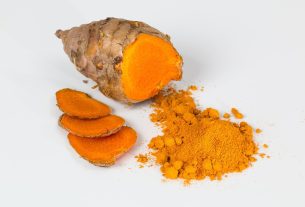Green tea is a popular infusion for atherosclerosis, as it has antioxidant and anti-inflammatory properties. Inflammation has been shown to play an important role in the onset and progression of atherosclerotic diseases, such as coronary artery disease. Several studies have shown that increased plasma inflammatory factors are predictors of myocardial infarction and cardiac death in previously healthy individuals and in patients with coronary artery disease. Activation of inflammatory factors is involved in the development and progression of atherosclerotic lesions in the coronary arteries and aortic wall.
Low-density lipoproteins (LDL) are also known to be involved in the development and progression of atherosclerosis. Specifically, LDL oxidation plays a key role in the development of atherosclerosis. Various studies have shown that increased levels of oxidized LDL are associated with coronary artery disease and myocardial infarction.
The consumption of dietary antioxidants, such as polyphenols, is a potential therapy to prevent LDL oxidation and the progression of atherosclerosis. Polyphenols are found primarily in fruits, vegetables, and herbal teas.
Mechanisms of Green Tea
In Japan, green tea, which is very rich in catechins, is the most popular beverage and the most important source of dietary polyphenols. Daily consumption has been shown to decrease serum oxidized LDL.
It has also been shown to have an anti-inflammatory effect, in addition to an inhibitory effect against LDL oxidation. Furthermore, green tea consumption has been inversely associated with the likelihood of myocardial infarction.
Plasma catechin concentrations have been shown to increase significantly with the consumption of seven cups of green tea per day. Although this does not produce any change in plasma LDL cholesterol concentration, green tea consumption is significantly associated with a decrease in serum oxidized LDL cholesterol, suggesting that it has an inhibitory effect against LDL oxidation.
In addition to its inhibitory effect against LDL oxidation, several studies have reported that green tea, likely through catechins, has an anti-inflammatory effect. Frequent consumption of green tea (seven cups/day) decreases inflammatory markers in the blood. Therefore, its protective effect against atherosclerosis is due to the decrease in oxidized LDL cholesterol and inflammatory factors, although the most important mechanism appears to be the prevention of LDL oxidation.
Effects
Frequent consumption of green tea reduces the likelihood of developing coronary heart disease and its progression, and decreases the incidence of myocardial infarction. These effects are also observed with the consumption of other antioxidant beverages and foods. Some studies have shown that frequent green tea consumption reduces aortic atherosclerosis, but this does not occur with black tea or vitamin E intake, suggesting a stronger antiatherogenic effect with green tea than with black tea or vitamin E.
Soy consumption is also associated with a lower incidence of myocardial infarction, but this association appears less significant than with green tea. Therefore, it appears that green tea consumption plays a more important role in preventing coronary heart disease and myocardial infarction than other antioxidant beverages and foods.

